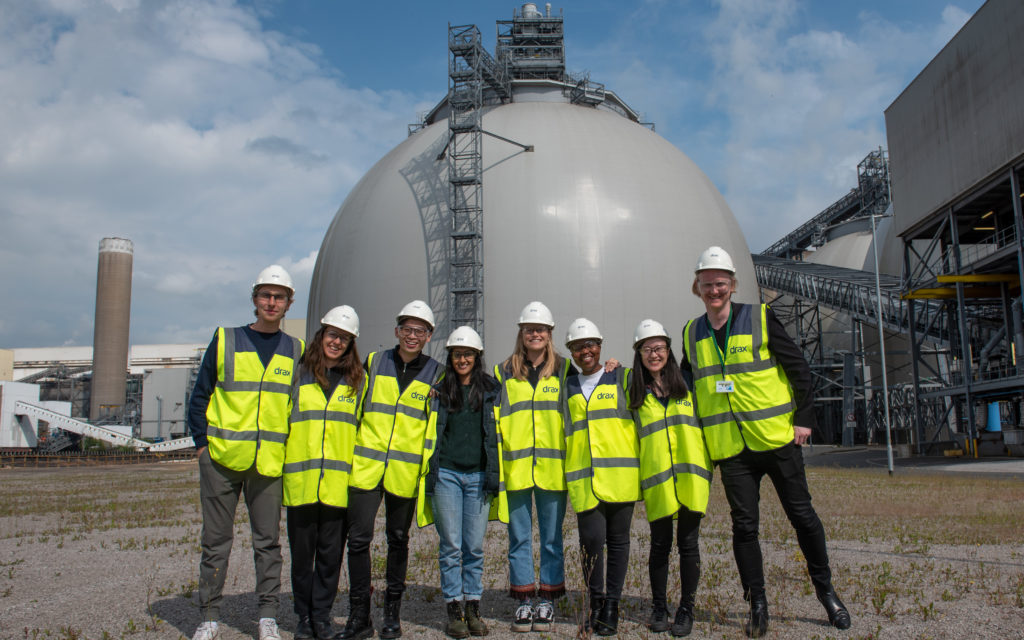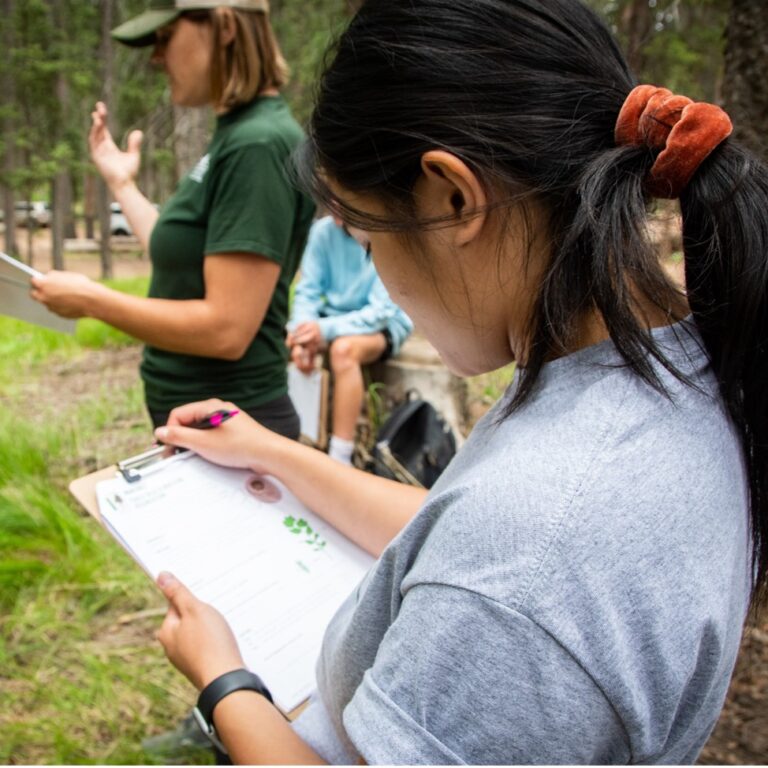The group of students were taken on a full tour of the site, which included seeing Drax’s Bioenergy with Carbon Capture and Storage (BECCS) pilot project. BECCS is a vital negative emissions technology which Drax plans to use to permanently remove millions of tonnes of carbon dioxide from the atmosphere every year, whilst also generating the reliable, renewable electricity the country needs.
They also met two of Drax’s leading experts, Dr Cat Reynolds, BECCS Strategy & Engagement Senior Manager and Michael Goldsworthy, Head of Climate Change & Carbon Strategy, on how the company has transformed to become the UK’s biggest producer of renewable electricity and plans to go even further by deploying BECCS.
Dr Cat Reynolds said:
“It was great to have the students from the University of Oxford here at Drax. The subject matter of their course is extremely relevant to us and reflects what Drax is trying to achieve in moving towards becoming a carbon negative company and developing an environmentally and economically sustainable business model for BECCS.
“I hope the tour helped them get a better understanding of the cutting edge technologies we’re pioneering at Drax and the decision-making challenges that businesses at the forefront of addressing the climate crisis face. The students asked some fantastic questions which show they are ready to put their studies into practice as they move on from academia and into business roles.”
During the tour, the group were shown how renewable electricity is generated and how sustainable, wood pellets have enabled Drax to reduce its carbon emissions by 95% in a decade, making it Europe’s biggest decarbonisation project.
They saw the 427-metre turbine hall that houses the huge turbines which power the generators to produce electricity, as well as the wood pellet storage domes – each large enough to fit The Royal Albert Hall inside, and the 115m high cooling towers, which are taller than the Statue of Liberty.
Dr Laurence Wainwright, Course Director MSc in Sustainability, Enterprise and the Environment, said:
“The inaugural cohort of the MSc in Sustainability, Enterprise and the Environment at the University of Oxford were thrilled to visit the Drax Biomass power station in Selby. The new course addresses two pervasive and unmet challenges of our time: making the transition to a zero-carbon and environmentally sustainable economic model, whilst simultaneously enabling sustainable development for all.
“Touring the power station and hearing from their top scientists enabled students to better understand the challenges and opportunities involved in the transition to net zero. Particularly in terms of understanding the nuances and operational realities that often aren’t visible from a lecture theatre. The students greatly enjoyed and benefitted from the visit.”
ENDS
Photo caption: University of Oxford students in front of Drax’s biomass domes.
Media contacts:
Megan Hopgood
Communications Officer
E: [email protected]
T: 07936 350 175
About Drax
Drax Group’s purpose is to enable a zero carbon, lower cost energy future and in 2019 announced a world-leading ambition to be carbon negative by 2030, using bioenergy with carbon capture and storage (BECCS) technology.
Drax’s around 3,000 employees operate across three principal areas of activity – electricity generation, electricity sales to business customers and compressed wood pellet production and supply to third parties. For more information visit www.drax.com
Power generation:
Drax owns and operates a portfolio of renewable electricity generation assets in England and Scotland. The assets include the UK’s largest power station, based at Selby, North Yorkshire, which supplies five percent of the country’s electricity needs.
Having converted Drax Power Station to use sustainable biomass instead of coal it has become the UK’s biggest renewable power generator and the largest decarbonisation project in Europe. It is also where Drax is piloting the groundbreaking negative emissions technology BECCS within its CCUS (Carbon Capture Utilisation and Storage) Incubation Area.
Its pumped storage, hydro and energy from waste assets in Scotland include Cruachan Power Station – a flexible pumped storage facility within the hollowed-out mountain Ben Cruachan.
The Group also aims to build on its BECCS innovation at Drax Power Station with a target to deliver 4 million tonnes of negative CO2 emissions each year from new-build BECCS outside of the UK by 2030 and is currently developing models for North American and European markets.
Pellet production and supply:
The Group has 17 operational pellet plants and developments with nameplate production capacity of around 5 million tonnes a year.
Drax is targeting 8 million tonnes of production capacity by 2030, which will require the development of over 3 million tonnes of new biomass pellet production capacity. The pellets are produced using materials sourced from sustainably managed working forests and are supplied to third party customers in Europe and Asia for the generation of renewable power.
Drax’s pellet plants supply biomass used at its own power station in North Yorkshire, England to generate flexible, renewable power for the UK’s homes and businesses, and also to customers in Europe and Asia.
Customers:
Drax supplies renewable electricity to UK businesses, offering a range of energy-related services including energy optimisation, as well as electric vehicle strategy and management.
To find out more go to the website www.energy.drax.com




















